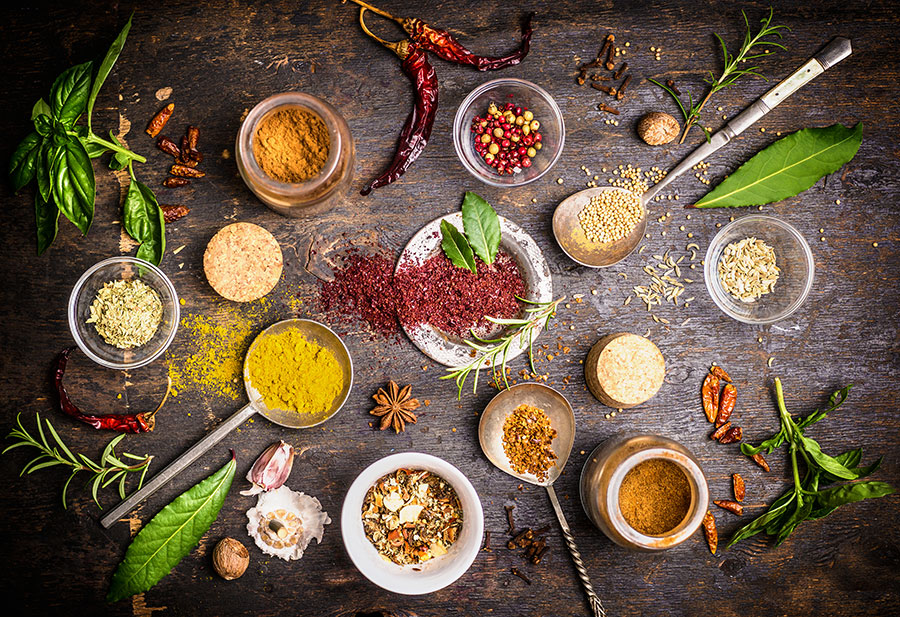|
Welcome to the herbalist’s kitchen! I love to cook and I think that is partially due to the fact that I view cooking as a vital part of the healing arts. As an herbalist, I am rooted in the belief that our food is the first line of defense in a strong, healthy and supported body. Herbs, used historically in kitchens of every culture, star not only as a ‘signature flavor’ but more fundamentally as healing building blocks sourced from nearby gardens, woods, jungles, rivers, mountains, deserts, glades and back yards to support optimal health with the resources at hand. Cooking is an art, a science, and a love language. I believe that we all need to find our muse, the spark in life that inspires us to create. I grew up in a family of cooks, or foodies, as we would call ourselves! So much of our bonding and love revolved around not only the sharing of food, but it’s thoughtful preparation. It’s how we shared our creativity and our love, and of course, it carried with it a healing energy. Herbs, spices, and whole ingredients were our medium and our food was and is a celebration of body and soul! Perhaps this why I see herbs as more than simple plants. A cupboard filled with varied herbs and spices can transport us as far as Morocco or Mexico or Mallorca…. or straight to our grandmother’s kitchen! All cultures have their signature scents and spices that flavor their faire. These herbs are not only typical of particular cultural cuisines, but are often endemic to the medicines of those same people. Nourishing Traditions, a favorite book in regards to our food as our medicine, takes us on a tour around the world with a sampling of traditional foods demonstrating the inherent wisdom of why certain people have been sitting around their dining tables for generation and generations partaking in particular foods. We live in a melting pot of cultures but the foundation to good health always comes back to the the food we eat. In my family, chicken soup was a staple. Coming from healthy eastern European stock, our soups were always made from the whole chicken, plenty of onion and garlic, and a rainbow of vegetables. Why the whole chicken? Because the bird would be simmered until the flesh fell of the bone, and the carcass was cooked till all of the rich collagen and nutrients were extracted from the bone. This was standard. The entire chicken was savored for its nutritious goodness and in turn, it offered deep nourishment. The native foods of particular cultures have a resonance of comfort and origin. They bring you home, to the embrace of mothers, grand mothers and aunties in the kitchen and the gathering of families for celebration and connection. This thread of nourishment runs so deep that we still find ourselves gathering in kitchens all around the world smelling the sweet or savory smells of our heart rooted foods. What is your heart food? Do you prepare it share it for those that you love? Are you continuing your traditions and sharing your story or those of your ancestors? As an herbalist, I rejoice in the aromatics of herbs, not only as our simple medicines but as the source of nurturance that sustains life. The spices we use have flavor and character, but did you know that they are also the foundation of many effective folk medicines passed on from generation to generation. The herbal movement is not a new fad, but one that leads us back to simpler times when our food was pure medicine. With the holidays around the corner, consider adding an extra hand full of this or that to your broths and gravies, to chicken and turkey, to the savories that make your mouth water and enjoy the health promoting benefit of these festive treats. Peeking into the spice cabinet of most Americans you can find a similar assortment of herbs. Get accustomed to the robust and enhancing flavors of many of our spices as you cook with them or take them independently as medicine. Though there is much more I could write about each and every one of these herbs, here is a brief break down! Use them abundantly in your cooking and share your creations with those you love! Oregano & Thyme: both are POWERFUL anti-microbials and are great to make a strong tea when in a pinch for some cold and flue support. Sage: Anti microbial but also astringent, the aromatics stimulate the brain and the tea can be gargled for sore throats. The tea can also be used to lessen hot flashes, as it is cooling. It also tones down our sebaceous glands, the glands that make us sweat. Rosemary: another brain booster, anti microbial and warming! Oil made from the leaves, when applied to sore muscles, will help to increase circulation and relieve tightness. Garlic: The king of antimicrobials, hot and pungent, is used for infections, both bacterial and fungal. Fennel, Dill Seed ,Cumin Seed: A favorite for gas and bloating, these are called carminatives and they help to improve digestion and relieve gas. If I have a stomach ache I’ll chew on a hand full of any of these and presto my stomach is soothed! Tumeric: High in cur-cumin, anti-inflammatory, and anti oxidant, this powerful root improves digestion and helps with liver detoxification and aids in restful sleep! See our famous golden milk recipe below! Ginger: Warming and soothing to the stomach, it’s great for nausea, improves circulation and relieves menstrual cramps, also anti inflammatory. Black pepper: Stimulates the absorption of other nutrients and is a must have at any meal for increasing absorption and stimulating digestion. This holiday season I encourage you to reach back to your traditions and share them with friends or family. It might be as simple as a pot of soup or a cup of tea. The very act of sharing food is healing and creates an energy that sustains. Be well and take care! |

